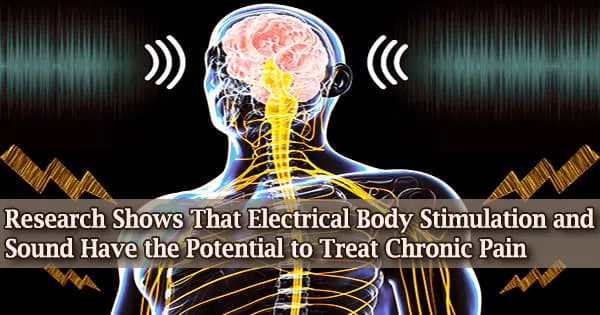The possibility of employing the method to treat chronic pain and other sensory problems is increased, according to research from the University of Minnesota Twin Cities, which discovered that electrical stimulation of the body paired with sound activates the brain’s somatosensory or “tactile” cortex.
The non-invasive approach was tried on animals, and soon, clinical trials will be conducted on people. Published in the Journal of Neural Engineering is the paper.
The guinea pigs used in the studies were electrically stimulated while listening to broadband sound being played by the researchers. They discovered that the two together triggered neurons in the somatosensory cortex of the brain, which controls touch and pain perceptions all over the body.
While the researchers’ experiments involved needle stimulation, one may accomplish a similar outcome with electrical stimulation tools, such as transcutaneous electrical nerve stimulation (TENS) units, which are widely sold in pharmacies and retail establishments.
The researchers are hoping that their research will result in a less dangerous and more widely available alternative to medication therapies for treating chronic pain.
It’s odd to think about using sound to treat pain, but if you think about what institutes like the University of Minnesota’s Center for Spirituality and Healing or the NIH’s National Center for Complementary and Integrative Health are doing, they’re looking at music therapy and combining other modalities with the traditional methods to be able to enhance healing of these types of conditions.
Hubert Lim
“Chronic pain is a huge issue for a lot of people, and for most, it’s not sufficiently treatable,” said Cory Gloeckner, lead author on the paper, a 2017 Ph.D. alumnus of the University of Minnesota Twin Cities Department of Biomedical Engineering, and an assistant professor at John Carroll University.
“Right now, one of the ways that we try to treat pain is opioids, and we all know that doesn’t work out well for many people. This, on the other hand, is a non-invasive, simple application. It’s not some expensive medical device that you have to buy in order to treat your pain. It’s something that we think would be available to pretty much anyone because of its low cost and simplicity.”
In the future, the researchers may incorporate music therapy into their “multimodal” approach to treating other neurological diseases to see whether they can further alter the somatosensory cortex.
“A lot of people have been using acupuncture or electrical stimulation non-invasive or invasive to try to alter brain activity for pain,” said Hubert Lim, senior author on the paper and a professor in the University of Minnesota Twin Cities Department of Biomedical Engineering and Department of Otolaryngology. “Our research shows that when you combine this with sound, the brain lights up even more.”
According to Lim, this opens up a brand-new area for the therapeutic use of bimodal and multimodal stimulation.
“It’s odd to think about using sound to treat pain, but if you think about what institutes like the University of Minnesota’s Center for Spirituality and Healing or the NIH’s National Center for Complementary and Integrative Health are doing, they’re looking at music therapy and combining other modalities with the traditional methods to be able to enhance healing of these types of conditions,” Lim said. “This research gives us a new, structured framework for doing that moving forward.”
The National Science Foundation, Lions Hearing Foundation, University of Minnesota Interdisciplinary Fellowship, and University of Minnesota Lab Startup Funds all provided funding for the study.
In addition to Gloeckner and Lim, the research team included University of Minnesota Twin Cities Department of Biomedical Engineering alumnus Jian Nocon (B.S. BME ’17).





